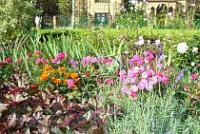Plants for urban landscaping. Assortment of trees and shrubs. Landscaping. Landscaping and landscaping
LIPA MELKOLISTNAYA - a slender tree with a dense, strongly branched crown, having an oval shape. For trees grown free, the crown attached low has a dome-shaped shape, the ends of the shoots hang down. The leaves of lime tree leaves are up to 10 cm long, bluish below, light green in spring, dark green in summer, yellow in autumn, bloom in the second half of May, fall in late September - in October. The tree is shade tolerant. Landing on the north side of buildings and structures is permissible. It is used in all areas of landscaping in the rank and file, alleys and group plantings. Decorative at any age and at all times of the year, but especially in summer. To the soil demanding. Prefers fresh loam and sandy loam. Does not tolerate soil salinization and excessive moisture.
LIPA LARGE differs from linden-leaf with larger leaves (up to 12 cm), having a dark green color. The leaves turn yellow and fall two weeks faster than the leaves of the small-leaved lime tree. It is used in gardening areas of children's institutions and schools. Decorative at all ages and at all times of the year, but especially in summer.
Maple sharp - tree up to 20-30 m high. The crown is dense, wide-round, the leaves are dark green, in autumn it is orange-yellow. Very beautiful during flowering. It is demanding to soils and moisture, it grows quickly, but does not tolerate soil compaction. It is not drought-resistant, takes out a penumbra. The top haircut is bad, Medonos. Fitontsidin. It is used in all areas of landscaping for group, single, alleys and ordinary plantings, for planting in arrays.
ASH IS ORDINARY - a tree up to 35 m high. The trunk is highly cleared of boughs, very slender. Crohn narrow, dark green. Sensitive to smoke, poison dust. Not enough winter hardy. Not formed. To soils and moisture demanding. Light-requiring On good wet soils it grows quickly. It is used in all areas of landscaping for ordinary, alleys and group plantings.
ELDER ELDERLY - tree up to 25-30 m high with a beautiful elliptical crown and thin branches. The leaves are dense dark green. Shade-tolerant To soils demanding. Winter-hardy and drought-resistant. Gas-resistant Asphalt pavement and soil compaction inhibit the growth of elm. Well formed. Fitontsidin. It is used on all areas of landscaping to create a single group, ordinary and aleynyh plantings.
TOPOL BERLINSKY - a tree 20-25 m high. The krone is narrow, almost cylindrical. Leaves oblong-ovate, light green. It grows very quickly, in 15 years it reaches a height of 14-15 m. It is demanding of soils, it withstands excessive moisture. Light-requiring Winter-hardy, gas-resistant. It tolerates a haircut. Resistant to mechanical damage. It is used in all areas of landscaping for ordinary, group and aleynyh plantings.
TOPOL CANADIAN - A tree of hybrid origin, up to 40-50 m high, very thick, slightly pyramidal crown. The leaves are dark green, triangular. Dissolves later than other poplars. Young leaves have a yellowish-red hue. Growing fast. Light-requiring, demanding on soils. Smoke and gazostotochiv winter-hardy. It tolerates a haircut. Decorative powerful crown and late falling foliage. It is used in all areas of landscaping for ordinary, alleys and group plantings.
BAREZA WARP - tree up to 15-20 m high. Crohn openwork, oblong-oval or cylindrical. The tree has thin hanging branches and clean white bark. In the lower part of the trunk in adult trees formed a dark crust. The leaves are bright green in spring, which gives the tree a special decorative effect. It grows quickly, in 10 years it reaches a height of 5-6 m. The root system is superficial. To soils it is undemanding, non-gas-resistant, very light-requiring. Phytoncide. It is used in all areas of landscaping for group and aleynyh plantings.
OAK RED - a slender tree with a height of 25-30 m with a thick wide-round or tent crown. The leaves are shiny, dark green, bright red in autumn. Maturing acorns two years. Under conditions of Moscow, it grows satisfactorily, at 16 years old, reaches a height of 6 m, at 30-35 years old, 12 m. Smoke, gas and drought resistant. Does not tolerate stagnant water. Well tolerated transplant. Fitontsidin. It improves soil. Decorative and summer and autumn. It is used in all areas of landscaping for group, single and aleynyh plantings.
CHESTNUT KONSKY - a beautiful tree 25 m high with a thick wide-round crown. The leaves are dark green. It blooms in May with white flowers with a pink spot. Thorny fruits. It grows slowly. Demanding to soils, shade-tolerant, non-gas-resistant, does not tolerate dry air. In the harsh winters in Moscow frosting. Decorative throughout the growing season. Under conditions of a blinding asphalt pavement, early browning of leaves and premature leaf fall are observed. It is used in all areas of landscaping for alleys, group, ordinary and single plantings.
LARCH SIBERIAN - a tree with enhanced decorative properties, up to 40 m high. Krone with ascending whorled branches. It grows quickly, at 12 years of age it reaches a height of 3 m. It is undemanding, light-requiring, frost-resistant, wind-resistant to soils. Lack of moisture tolerates well. Gas resistant, reacts to gases only with slower growth and curvature of the top. Good withstanding pruning. It is applied on all sites of gardening for group, aleyny, ordinary and single landings. When creating mixed groups should be combined only with shade-tolerant species (spruce, linden).
FIR OF THE BARREL ENGELMAN - a tree up to 20-25 m high with a pyramidal crown and elastic, forming horizontal paws, boughs. The needles keep 5-7 years, have green, gray or bluish coloring. It grows moderately, at the age of 25 it reaches a height of 9 m. The requirement for soils is average. Shade tolerant, resistant to high temperatures, lack of moisture in the soil, urban dust and gases. It tolerates a haircut. Decorative for its strictly tiered architecture and color of the needles. Phytoncide. It is applied on all sites of gardening for group and single landings on a lawn.
Common FIR - large slender tree with a sharp pyramidal crown. Boughs somewhat down. Demanding to the soil is average. Grows moderately. Very shade-tolerant, hardy, drought-resistant. Does not tolerate stagnant water. Has a superficial root system, windshield. Suffer from gas and dust. Good haircut (you can give any artificial form). It has many decorative forms. Decorative bumps. Phytoncide. It is used for group and single plantings and hedges.
IVA WHITE - a large tree up to 25 m high with a wide oval crown, long hanging branches and red-brown shoots. Leaves linear-lanceolate, light green, silvery on top in youth and whitish from below. It blooms simultaneously with the blooming of the leaves. It grows quickly, it is demanding of soils, it is very light-requiring, gas-resistant. Subjected to formation. It has many decorative forms. Phytoncide. It is applied on all sites of gardening for group and single landings.
MOUNTAIN ASH - tree up to 10-16 m high with an oval crown. The leaves are pinnate, bright green, red in autumn. It blooms in late May. The fruits are red. Grows moderately. To soils it is undemanding. Light-requiring, but makes a slight shading. Severely damaged by smoke and gases. Hardy and moisture-loving. It has many garden forms. Phytoncide. Does not tolerate mechanical damage. Decorative during flowering and fruiting. It is used in all areas of landscaping for single and group plantings.
CHERUMUHA MAAKA - tree up to 12-15 m high with smooth orange-yellow peeling bark. Crohn rounded, medium density. Leaves lanceolate, shiny. The flowers are small, odorless, the fruits are black, inedible. It grows quickly, in deep fresh soils reaches a height of 7 m in 10 years. It is photophilous. To the soil demanding. It is steady against winter frosts and frosts. It is recommended to apply on all areas of gardening (except areas of children's institutions) for group, single, private and aleynyh landings.
APPLE GRAPE - Different varieties of hybrid apple trees. It is little demanding of environmental conditions, has good quality of fruits, has a low decorative effect (from the stock). It is used for gardening schools and kindergartens.
APPLE SHADECKER - tree up to 6 m high with a straight trunk. Very decorative in bloom. The flowers are pale-pink, about 4 cm in diameter, the fruits are bright, pink-red, slightly ribbed. Growing rapidly, the demands on the soil is average, light-requiring. Gases are damaged. It is used in all areas of landscaping for group, single, alleys and ordinary plantings.
APPLE SIBERIAN (berry) - tree up to 10 m high or Shrub up to 5 m high with a rounded dense crown and thin bare shoots. The leaves are shiny, autumn yellow or pink-orange. Flowers are white. The fruits are small. The apples are red or yellow, remain on the tree all winter. To soils it is undemanding, gas-resistant, light-loving average, grows moderately. It tolerates a haircut. It is found in standard forms. Considered one of the best wilderness for stock. It is used in all areas of landscaping for ordinary, group and single plantings.
LILAC ORDINARY - shrub up to 4-8 m with dense dark green foliage and large pyramidal inflorescences of purple or white fragrant flowers. It blooms in the second half of May. Grows moderately. To the soil demanding, resistant to gas. Hardy and drought resistant. Phytoncide. It is used in all areas of landscaping in the group of ordinary and aleynyh plantings and hedges.
LITTLE LIQUE - garden varieties of common lilac with simple and double flowers of various shades. It is used for gardening schools, kindergartens, clinics, hospitals in group, single, ordinary alleys plantings.
LILAC HUNGARIAN - shrub up to 3-5 m tall with dark green shiny leaves. Flower whisk loose. Flowers mauve or purple with a pleasant smell. Flowering time is June. The soil is undemanding. Gas resistant and drought resistant. It is used on all areas of landscaping for group, avenue and ordinary plantings and for hedges.
Maple ginnal - tree or shrub up to 4-7 m with brilliant three-blade dark green, in the fall - fiery red leaves. The flowers are small, creamy white, fragrant, in oval panicles. Medonos. It blooms in late May - June. Grows moderately, to soils it is not exacting. Winter-hardy and drought-resistant. It tolerates a haircut. Very decorative standard copies. It is used in all areas of landscaping for group, ordinary, aleynyh plantings and hedges.
HAIRWAY PELIMYAGYKY - tree-shrub up to 8 m with large spines and a rounded dense crown. The leaves are large, serrated, light green, in autumn - orange-yellow. Flowers are large white. It blooms in late May - early June. Medonos. It grows slowly, soils are not demanding. It tolerates a haircut. Gas-resistant Tolerates partial shade. It has a dense crown, large beautiful flowers and bright red fruits. One of the most decorative types of hawthorn. It is used in all areas of landscaping (in children's institutions - for hedges along the outer row along the fences) for group and single plantings and hedges.
KUSTOVO ELM - The bush form of an elm ordinary, is formed at - the correct hairstyle. Escaping ability lasts up to 150 years. It is used in various landscaping areas for single and group plantings and for hedges.
IVA BASKET - large shrub or tree up to 8 m high with long one-year twig fluffy shoots. The leaves are dark green above, silvery below, linearly lanceolate, with curled edges. Blossoms before foliage blooming. To soils demanding light-requiring. Gas resistant. Especially spectacular around the ponds. It is applied on all sites of gardening for group, single and ordinary landings.
DEREN RED (svidina) is a strongly branched shrub up to 3-4 m high with an ovate-ovate crown and twig-shaped long dark purple shoots. The fruits are black. To soils demanding. Shade-tolerant In the conditions of Moscow sometimes frost freezes. Drought resistant It tolerates a haircut. It is used in all areas of landscaping for group plantings and hedges.
DEREN WHITE Siberian - shrub up to 2-3 m with upright purple-red twig shoots. The flowers are creamy white. blooms in late May - early June. The fruits are milky white. It grows quickly, demanding to the soil. Shade-tolerant, but blooms only in lighted areas. Gas-resistant, frost-resistant. It is used in all areas of landscaping for group plantings and hedges.
HAPPINESS TATAR - shrub up to 3-4 m with a thick ovate or spreading crown. Leaves are gray-green, dull. Flowers are large, white or pink, bloom in late May - early June. Fruits inedible (yellow or red berries) ripen in July and August. It grows quite quickly, is not demanding on soils. Grows well in urban environments. Gas resistant and drought resistant. Light medium mean. It is used for group and single plantings and for hedges.
Chubushnik Ordinary - shrub up to 3 m high with elongated-oval dense crown. The flowers are creamy white, very fragrant, appear in June. It grows moderately, to the soil quite demanding. Light-requiring, but makes penumbra. It grows well in the city, resistant to dusting the air and soil compaction. Fitontsidin. It is used “in all areas of landscaping for group, single, ordinary plantings and hedges.
BODYBRUSTER or Calip's spiraea - shrub up to 3 m high with a spreading crown and dark green three-blade foliage. Flowers white, blooms in June - July. Fruits are bubbly, the leaves are bright red during the ripening of the fruit. It grows quickly, soils are not demanding. Drought tolerant shade tolerance. Resistant to gas. Winter hardy Well formed. It is applied on all sites of gardening for group and single landings and hedges.
ACADIATION YELLOW (Caragana) - shrub up to 3-4 m tall with a sprawling-ovoid crown, leaves in spring are light green, pinnate, bloom early. It blooms in the second half of May - early June. The flowers are yellow, honey. It grows quickly, to the soil unpretentious. Light-requiring, but tolerates a slight shading. It is resistant to gas, but quickly recovers foliage after damage. Well formed. Decorative in clipped hedges (low and high), especially against the background of dark green. It is used in all areas of landscaping for hedges.
BARBARIS ORDINARY - multi-truncated prickly shrub up to 2-3 m high with dense dull green foliage, with flowers in racemes and bright red berries. It blooms in late May - early June, the berries appear in late August and hold until November. It grows quickly, undemanding, light-requiring soil. Affected by rust fungi, dangerous to cereals. Medonos. Fitontsidin. Its purple form is especially decorative - barberry purple. It is used for group and single plantings and for hedges.
Irga ordinary - shrub up to 2-3 m with a spreading egg-shaped crown. In the spring of decorative silver-felt shoots and leaves. Blossoms in May. The flowers are white, in the apical inflorescences, the berries are blue-black, appear in August. It grows quickly, it is undemanding to soils, it is light-requiring, but it tolerates partial shade. Drought resistant. Medonos. It is applied on all sites of gardening for group and single landings.
FORZION EUROPEAN - shrub up to 2-3 m with a narrow ovate crown. The leaves are ovate-lanceolate, bright green to late autumn. It blooms in May, before the leaves bloom, large yellow flowers. Grows moderately, to soils demanding. Light-requiring, drought-resistant. It is applied on all sites of gardening for group and single landings.
Kalina ORDINARY BULDONAGE - Terry form of Viburnum ordinary with elegant spherical snow-white inflorescences. It blooms in late May-early June. Shade-tolerant To soils undemanding, moisture-loving. Gas resistant. It grows pretty fast. Very effective in standard form. It is applied on all sites of gardening for group and single landings.
SPYRIA OTHER - shrub up to 2 m with long twisted branches and a rounded dense crown. The leaves are ovate-elliptical, coarsely serrated along the edges. It blooms in May with white flowers in hemispherical plates. It grows quickly, to soil undemanding. Light-requiring, drought-resistant. It is used in all areas of landscaping for group and single plantings and hedges.
ROSA - RUGOZA and wrinkled dogrose - shrub up to 1.5-2 m with a spherical crown and shoots, densely covered with bristly thorns. The leaves are thick, wrinkled, shiny, dark green, bloom in May and hold throughout the summer. Flowers are dark red, red, rarely white, fragrant. Fruits are large, ripen at the end of July, edible, contain vitamin C. It grows moderately, so it is demanding to the soil. Light-requiring, gas-resistant, winter-hardy, drought-resistant. It is used for group and single plantings and for hedges.
Juniper Junior - low creeping shrub with open branches, bright green needles and a large number of spherical cones of brown-black color, having a thick gray patina. It is frost-resistant, very drought-resistant and light-requiring, it does not tolerate even a slight shading, it is resistant to smoke and gases. It is used to create small groups in gardens and decorate slopes.
CURRENT BLACK - shrub up to 2 m with a thick spherical crown and fragrant three-lobed leaves. Flowers are small, greenish. Valuable berry: berries are black, edible, rich in vitamin C. It grows moderately, it is demanding to the soil, shade-tolerant. Hardy Gas resistant. Decorative dense foliage. It is used for group and ordinary plantings.
CURRENT ALPIAN - shrub up to 2 m with a highly branched, very dense rounded crown. The leaves are small, shiny, dark green, reddish in autumn. Flowers are small greenish. The berries are small, bright red. It blooms in May, the berries appear in July. It grows quickly, to soil undemanding. Hardy, drought-resistant. Amenable to shearing. It is used in all areas of landscaping group and single plantings and for hedges.
SANDY CHERRY - shrub up to 1 -1.5 m with a thick crown and dense lining. The leaves are narrow elliptical, dull, gray-green, redden in autumn. The flowers are white, small, scattered throughout the shoot for 2-3 in the shield. Drugs black with a bluish bloom. It blooms in late May-early June. Grows slowly, it is undemanding to soils. It is photophilous, but tolerates light shading. Drought-resistant, quite winter-hardy. It is used in all areas of gardening group plantings and hedges.
ARONIA BLACKFLOOD - shrub up to 1.5-2 m with shiny, dark green, in the fall - orange-red leaves. White flowers in racemes. Berry fruits, black, shiny, edible in August. Flowering time - the end of May - the beginning of June. It is demanding to soils, light-loving is average, tolerates light pruning. Used for group and single landings.
MAGNOLIA - evergreen shrub 60-80 cm high, sometimes up to 1.5 m, with spherical dense crown. Leaves pinnate, tough, leathery, shiny. Reddish in spring, dark green in summer, red-bronze in autumn. The flowers are golden yellow, the fruit is bluish-black, the berries are edible, ripen in August. To soils demanding shade-tolerant. It tolerates compacted soils, asphalt pavements and flue gases. Amenable to pruning. Above the snow frosting. It is applied on all sites of gardening for group plantings and borders.
QUINCE JAPANESE LOW - prickly shrub 0.6–1 m high with dark green leathery foliage. It blooms in late May - early June with large orange-red flowers. Fruits - yellow fragrant apples. Grows moderately, to soils demanding. Light-requiring medium. In Moscow frosting. Very decorative and during flowering and fruiting. It is used on school gardening sites and in residential gardens for group plantings and borders.
Grapevine Grapevine - fast-growing decorative liana, reaches a height of 15 m. It has antennae. The leaves are large, purple autumn, palmate-complex. The berries are small, inedible, bluish-black. To the soil demanding, responds well to fertilizer. It grows in sunny and shady places. Hardy It is used for vertical gardening in all areas of gardening.
reference Information

Landscaping. Landscaping and landscaping
Gardening is used today for a variety of purposes. In the city - to create a unique look of streets and squares, to ennoble industrial landscapes, to create recreational zones of squares and parks. In many localities, at the management level, landscaping programs are adopted that transform the most dismal and uninteresting urban views.
On a plot near a country house, a dacha, or any institution, the correct, thoughtful arrangement of plants can say a lot about the taste of the owner and thereby work on creating his image.
It should be understood that this component of landscape design - landscaping also requires a professional approach, like any other component: surveying, carrying out drainage, installing an irrigation system, etc. After all, planting living plants is for many years, and this is not such an easy job. ! Here it is required to take into account the mass of any factors:
- terrain;
- soil condition;
- growing conditions of different plants;
- livability them with each other and much more.
"Zhilekspertiza" offers the services of professional landscape designers who can take into account not only all these factors, but also the wishes of customers on the design of their property.
Urban landscaping

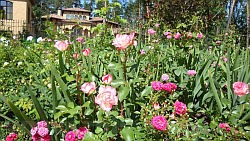 Green areas in the city perform certain functions:
Green areas in the city perform certain functions: 1. Climatic:
- protect the ground, asphalt pavements and walls of buildings from overheating;
- moisten the air due to evaporation of water from their surface.
2. Sanitation:
- produce oxygen;
- highlighting phytoncides, kill microorganisms in the air;
- detains dust;
- absorb noise.
3. Aesthetic:
- improve the appearance of urban arrays;
- allow you to create an interesting design.
4. Recreational:
- create good conditions for walking and outdoor recreation;
- beneficial effect on the human psyche, facilitating stressful states and promoting relaxation.
Thus, trees and shrubs, flowers and grass play a significant role in the life of the city. “Zhilekspertiza”, taking care of the improvement and landscaping of Moscow, proposes to use its many years of experience in creating beauty in the megalopolis with the help of plants.
Landscaping objects
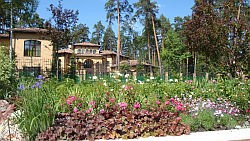
 In each locality there are many such objects - areas planted with vegetation in compliance with the principles of landscape design. These are parks, squares, boulevards, gardens, forest parks, even dividing lanes on the highway. In cities with their generally unhealthy ecology, it is very important to use the slightest opportunity for planting. Moreover, plantings should not be arranged chaotically, it should be a gardening system that performs the functions assigned to the city green cover.
In each locality there are many such objects - areas planted with vegetation in compliance with the principles of landscape design. These are parks, squares, boulevards, gardens, forest parks, even dividing lanes on the highway. In cities with their generally unhealthy ecology, it is very important to use the slightest opportunity for planting. Moreover, plantings should not be arranged chaotically, it should be a gardening system that performs the functions assigned to the city green cover. Compensatory landscaping
In accordance with the legislation of the Russian Federation, if during the implementation of various works - construction, repair, earthworks - green plantings were destroyed, this should be compensated for in cash or in kind. Compensation in kind is the planting of new plants instead of ruined ones. We provide our services in the implementation of this type of landscaping in Moscow. Our experts understand all the nuances of such work, because even if there is enough space for planting, it is necessary to take into account the state of the soil, the location of light and shade, and the terrain in order for the plantations to take root. And how often in Moscow after the end of construction is it simply impossible to find a territory of such size as to plant as many plants as were destroyed. Here our specialists can offer a way out.Vertical-roof gardening of buildings
Plants growing on the roof is still an unusual solution for our country. And abroad, this option of gardening is very common, not only in urban areas, but also in cottage villages, where flowers and herbs are planted on the roofs of garages, sheds, etc. Plants that climb the walls of the building are more common to our citizens option. It is great in cases where new buildings need to quickly create an array of greenery, and there is very little free space. This type of landscaping improves the composition of the air, brings bright colors to the urban landscape, and, moreover, serves as a decorative design of buildings, protects from excessive sun, masks architectural flaws.Landscaping plot
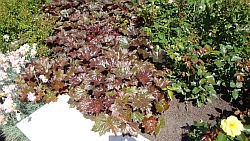
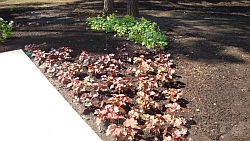 The arrangement of the site is a continuation of the arrangement of the house, and just like in the house, everything should please your view, be comfortable, give you the opportunity to proudly demonstrate the stylish environment. To embody all these aspirations, a professional hike is necessary, since only a specialist with relevant education and experience can fully take into account all the features of your site and successfully plant at least from scratch, even if you already have vegetation.
The arrangement of the site is a continuation of the arrangement of the house, and just like in the house, everything should please your view, be comfortable, give you the opportunity to proudly demonstrate the stylish environment. To embody all these aspirations, a professional hike is necessary, since only a specialist with relevant education and experience can fully take into account all the features of your site and successfully plant at least from scratch, even if you already have vegetation. Landscaping project
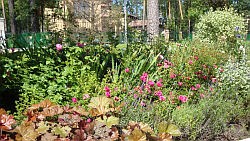
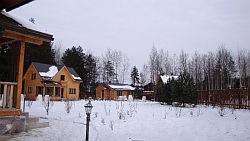 Our experts will offer you a project that includes the following elements:
Our experts will offer you a project that includes the following elements: - Ornamental and fruit trees are perhaps the least fashionable element of the site improvement. Trees always attract attention with their diverse beauty: in spring, you can enjoy their flowering and aroma, so relax in the shade in their shade in summer, and in autumn, generous fruits and a riot of foliage colors give the owner many pleasant impressions.
- Large-sized plants - the planting of these trees is distinguished into a separate element of garden landscaping, since working with mature trees with a developed root system and a crown and a height of two meters or more differs from planting trees. Krupnomery allow you to immediately create a finished composition, to see the landscape as it should look like on a landscaping plan.
- Ornamental and berry bushes are a very popular element that creates volume, perfectly holding a decorative form; shrubs, like trees, delight the eye almost all year round.
- Flower beds - a place where there is wander fantasy. Various colors and forms, different season and duration of flowering, annual and perennial. ... Yes, floriculture and gardening are closely linked, it is probably impossible to imagine the landscape without a single flower.
- Lawns are cultivated lawns; they are created either by sowing seeds, or by laying ready-made turf with growing grass - the so-called rolled lawns are of the following types:
- ordinary - intended for circulation; covered with grass from the family of cereals;
- moorish - it consists of meadow and wild flowers, it blooms beautifully almost the whole summer;
- parterny - highly decorative lawn; usually adjacent to a house or other building, has a representative appearance; it is impossible to walk on it;
- sports lawn - covered with grass, resistant to trampling.
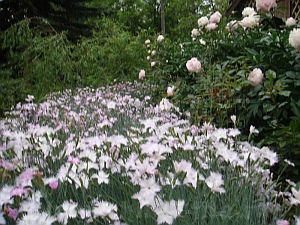
Country gardening
Landscaping in a small area is not easier, but perhaps even more difficult than in a large one. Cottages - this is mainly six acres of territory. And I want to arrange and orchard, and garden, and flower beds, and lawns. Specialists of our organization will tell you how to make the most efficient use of every piece of land, how to zone a plot so that everything necessary can fit on it. The landscape designer will help determine the choice of plants suitable for a small area, which will most contribute to the creation of a highly artistic image, but at the same time will not overload the site. For gardening cottages extremely successful is the following method.Vertical gardening
This cultivation of plants on various vertical structures: trellises, racks, pergolas, arches. It is used to maximize the use of space, especially in small areas for landing; helps to create three-dimensional forms, as well as makes the greening object decorative. This method allows you to hide household structures and non-aesthetic-looking structures, to decorate the fence and props. By the way, the plants winding along the walls of the house perform another very useful function: they take away excess water and thus do not allow it to produce a destructive effect on the foundation and other building elements.Plants for landscaping
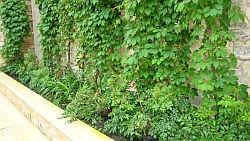
 To create a landscape design offers a great variety of different plants. Specialists of our organization will tell you exactly which breeds and varieties should be taken for specific gardening purposes, for a particular plot, taking into account its soil, topography and environment.
To create a landscape design offers a great variety of different plants. Specialists of our organization will tell you exactly which breeds and varieties should be taken for specific gardening purposes, for a particular plot, taking into account its soil, topography and environment. Types of plants used:
After the acquisition of a land plot, the first priority is its landscaping.
And the owner asks the question: what species of trees and shrubs to buy in order to improve the house space as soon as possible with the help of plantations.
In this case, you should pay attention to the fast-growing plants: trees and shrubs. With their help, you can quickly arrange a hedge or decorate the site.
Let's see what trees grow quickly.
The fastest growing tree
The fastest growing tree on planet Earth is eucalyptus, a native of Australia and the island of Tasmania.
In the first 10 years of its life, this tree grows very quickly, increasing annually in growth by 4-5 ...
0 0
Park areas are a breath of fresh air for the citizens, in summer and winter.
Modern megacities do not often indulge residents with green oases for relaxation. There is less and less space for parks and squares. High-rises, shopping centers, hotels are relegating plantings to the background. But, despite the obvious technical progress, man is a part of nature. He can not rejoice at the trees, flowers, flowering shrubs, only in the midst of greenery, he feels calm and peaceful.
The city authorities, whenever possible, try to pay attention to the development of park zones, rightly considering them vital for the citizens. Accordingly, such a service as landscape design for a modern recreation park is in demand, which we will talk about today.
Types of recreation parks
Consider the types of parks for recreation, each of which has its own characteristics.
Park of Culture...
0 0
Often, people who have acquired land, there is a problem with their landscaping. The site owners want as soon as possible to decorate their territory with trees and shrubs, while so that they grow quickly, be beautiful, have different forms, some to give fruit and do not require special heavy care. In this case, use different types of shrubs and trees, which can be called fast growing.
Eucalyptus - the fastest growing tree
The fastest growing tree in the world is eucalyptus. His homeland is Australia. Eucalyptus grows with incredible speed. Every year he adds 4–5 meters in height and so reaches a height of 100 meters. It grows four times faster than oak.
Based on this, clusters of eucalyptus trees of five years old look like large forests. This tree grows in tropical and subtropical climates. In the Northern part, only ornamental varieties are grown.
Consider the species ...
0 0
According to the enterprise KP "Improving Kremenchuk", this week, employees of the company began planting trees and shrubs in parks and squares of the city.
Yesterday, 9 bird cherry trees and 60 juniper saplings were planted on the alley on Poltava Avenue. Birch trees, bird cherry trees, rowan trees, linden trees, golden ash trees, more than 40 seedlings, were planted in the Park of Holodomor victims.
New trees of rare species appeared in the City Garden. Over 40 saplings of trees and shrubs were also planted there: pines, spruces, mountain ash, golden ash trees, hydrangeas, catalps and juniper.
Today, the work begun yesterday in the Oleg Babayev Square and Pushkin Boulevard continues, golden ash trees, pines, spruces, maples, Verginsky juniper are planted.
If you find an error in the text, select it and press Shift + Enter or click here to report ...
0 0
Trees in the City or City among the trees
“This is an amazing city - trees grow above houses in it!” Exclaimed the great English modern boxer Lenox Lewis, who first appeared in Kiev. Oh, these big children, who grew up in an urbanized world, incomprehensible to us, among the jungle of glass and concrete! This exclamation of the athlete has become very popular in Kiev, and caused a condescending smile on many people - it's so simple and understandable - Vladimirskaya Street, mansions on Lipki, Podol, Kurinevka, Wind Mountains, Vinogradar, and trees - linden, maples, poplar, birch pussy willows
Let me remind you that there are three concepts of scale in urban planning: the scale of a person, the scale of a group of people, and the super-scale stadiums, airports, or three-level interchanges for thousands of cars rushing past us. Without a doubt, we feel most comfortable in an urban environment, large-scale person, in which we define our personal ...
0 0
Pruning trees
Systematic pruning of trees and shrubs is one of the important methods of care. It is produced throughout the life of woody plants. Pruning at a young age is mainly aimed at creating the crown, later - at its preservation and maintenance, at the old - at the rejuvenation of the plant.
Depending on the goal pursued, molding, rejuvenating and sanitary pruning are distinguished, and according to production methods, pinching, shortening of shoots, strong pruning and thinning of the crown are distinguished.
Molding pruning includes pinching and shortening of shoots, strong pruning, thinning of the crown.
Pruning trees in order to form and lay a crown should be started at the youngest age, when the plants are still in the nursery. The main requirements for this are correct assessment of plant growth conditions depending on the shape of their crown, the ability of plants to reproduce the desired form of crown and the correct application of a particular type ...
0 0
Kiev in the XIX-XX centuries. He was known throughout the Russian Empire for its unique landscape, green spaces and picturesque views of the Dnieper shores. The city lived as if in a green cradle, surrounded on all sides by forests.
The very nature of ancient Kiev is intended to be a city garden. After all, it is located in a fabulously beautiful area. In addition, the Kiev Mountains, according to many experts, are the focus of life-giving energy, a place where a person does not just rest and relax, but where he is closer to the cosmos, to God. It is not for nothing that the Apostle Andrew the First-Called predicted a great future for this city.
Modern guests because of the "cordon" still do not cease to express their admiration: they saw, they say, parks in cities, but that the city in the park ...
But before Kiev turned into a green city, it took a lot of time during which Kiev residents were directly involved in its landscaping.
Historical heritage of landscaping and gardening in Kiev
0 0
Custom Search
Selection of the range of plants
Questions of the selection and placement of plants in a particular area are solved in the design process, with the following drawings:
the layout of plants on the site with the location of trees, shrubs, lawns, floral decoration;
site plan indicating the range of trees and shrubs, as well as their number;
large-scale flower design plans with the name and number of plants;
transverse architectural profiles, giving an idea of the volume and color solutions.
In the RSFSR can grow various types and varieties of trees, shrubs and herbaceous plants. The main task in the selection of their range is the compliance of the conditions of this object with the biological characteristics and decorative properties of the plants to be planted.
Soil conditions. Natural soils suitable ...
0 0
Landscaping parks
Landscape Design Recreation Park: photo
Choosing a landscape design park area
Beauty and unity with wildlife have always positively influenced not only the emotional state of a person, but also his physical health. Therefore, recently it has become popular to equip private parks as a holiday destination. A thoughtful and carefully planned cozy park is exactly the place where you can enjoy nature, socialize, have a rest from the hustle and bustle of city life and gather positive emotions.
What do you need to know in order to make your park a favorite place for recreation, and not a senseless heap of plants and architectural elements?
Landscape Design Recreation Park
Making up the landscape design and thinking through the design of the future park, first of all, it is necessary to determine the style in which all its elements will be sustained.
Choosing a park design style, you should consider not only your own ...
0 0
10
Trees of valuable species and new shrubs will be planted in parks and Smolensk square in the spring, the press service of the mayor's office reports with reference to Zelenstroy.
Greening will be carried out to maintain ecological balance: new trees and shrubs should replace those that had to be removed for one reason or another.
Right now the city is actively working to remove emergency trees, pruning and kronirovanie. In "Zelenstroy" explain that such work should be carried out before the onset of warm weather, while the trees have not yet "woke up."
Emergency trees with a critical inclination of the roadway have already been removed in the square near the October cinema, also here molding molding of trees along the footpaths and trimming of ornamental shrubs were carried out, and timbering was removed. In the spring, as in other parks and squares, new green plantings will appear here.
In March, the specialists of the municipal institution will seriously deal with Zadniprovsky ...
0 0
11
Among the protective plantings that perform mainly social, sanitary and hygienic and aesthetic functions, an important place belongs to planting trees. They play a certain role in the preservation and replenishment of oxygen, the absorption of carbon dioxide; phytoncides secreted by them have a favorable effect on the human body and contribute to the death of many insects, pathogenic microbes and bacteria. Green plantings weaken the wind speed, increase the humidity of the air, in summer they lower the temperature of the air a little, shade the soil, which significantly reduces its heating and moisture evaporation. Particularly large is the role of protective plantings in reducing noise, crown retention of dust particles, gases, harmful emissions from industrial production, reducing the heating of buildings, sidewalks. This generally creates more favorable conditions for human life and health. The recreational role of green space, the impact on the human psyche, especially in combination ...
0 0
LE PARK LLC has been engaged in professional landscaping of urban areas since 2002. We have designed and implemented more than 20 large urban facilities, including parks, squares, shopping centers, business centers, hotels, ranging in size from 15,000 m2 to 100,000 m2. Our own park of special equipment and a professional team help us in implementing our projects. This also provides a lower cost, since we do not depend on contractors.
Urban landscaping: turning a metropolis into a dream
The constantly growing number of cars, round-the-clock smoking pipes and noise worsen the ecological situation in the city, affect the health and well-being of its inhabitants, and make their stay in it uncomfortable. The best way to solve these problems - urban landscaping. Plants reduce the influence of all the above and many other negative factors. How does this happen?
The impact of gardening on the city
 - The crowns of trees absorb noise, which produces transport moving in several rows.
- The crowns of trees absorb noise, which produces transport moving in several rows.
- Trees trap wind and dust particles that it carries.
- Greening reduces the carbon dioxide content in the atmosphere, thanks to which oxygen is released, making the air more suitable for breathing.
- We must not forget that the plants adorn the city. Impressions from the same street before and after landscaping will be completely different.
- It is proved that among the wildlife, people feel much calmer and more comfortable than among the stone, plastic and metal.
- During the summer heat humidity decreases. Gardening is necessary to keep it at an acceptable level.
- Well-maintained green spaces attract people, become a meeting and walking place.
- In hot weather, trees give shade, which does not allow the pavement to heat up even more. In the shade of the trees arrange a place to rest.
The benefits of gardening are hard to overestimate. We gave only the most significant arguments in favor of gardening, the reasons for the spread of plants in the city are much more.

Greening the city - clean air, great mood
There are various types of landscaping, together they make the city better, cleaner and more beautiful. Here are the main types. urban greening: squares, parks, forest parks, green areas, alleys, front gardens. As can be seen from the list, woody plants play the main role in landscaping, although grasses and shrubs are also important.
Forest parks - it is the improved forest areas located within the city or near it. To beautify the forest park, too thick thickets are removed, they are doing sanitary cutting of trees, they arrange walking paths.
A park - a large green complex in the city. Inside the parks may be alleys, lawns, solitary trees and plantings. Landscaping parks is important, above all a place to rest, and of course - clean air.
Front gardens called green spaces between sidewalks and residential buildings. Trees, shrubs and herbaceous plants are planted in these areas. Tree crowns stop dust and exhaust fumes from the road, reduce noise, and grasses and shrubs clean the air and serve to green the space in front of the house.
Alley - This is a wide road, on the side of which trees are planted in one or two rows. Trees are also placed in the same way around the roadway.
Boulevards they call wide walking roads, along the sides (and sometimes in the middle) of which trees are planted and lawns are laid out. They are located in the middle of the big streets, as well as on the embankments. Nearby often have monuments, benches, fountains.
Squares - These are compact gardens, most of the vegetation in which are herbs and shrubs. Squares are located near intersections, as well as for landscaping densely built areas and industrial zones.
What is known, probably all. These are areas sown with cereal grasses. If flowers are planted interspersed with cereals, such a lawn is called Moorish. There are also ordinary, parterre and Moorish lawns. There are high demands on the ground lawn, it should be perfectly groomed and consist of elite varieties of herbs. A meadow lawn, on the contrary, is not often cut, and it may contain tall grass and even wild flowers.
Planting individual areas
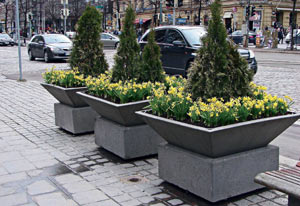 Landscaping urban areas includes work with specific areas. For example, near schools and kindergartens one cannot plant prickly, poisonous and potentially dangerous plant species for children.
Landscaping urban areas includes work with specific areas. For example, near schools and kindergartens one cannot plant prickly, poisonous and potentially dangerous plant species for children.
Trees for landscaping the city should be distinguished by high resistance to air pollution, be undemanding to care. The most hardy plants are suitable for planting trees, because the conditions there are often very far from ideal.
Landscaping sites in front of municipal buildings, shopping and business centers serves primarily to attract attention and create an image. Vertical gardening, roof gardening and other rarely used methods can be used for this. The remaining functions of gardening, in this case, too, are important, although they fade into the background.
The special approach requires landscaping cemeteries. Plants in such places serve to create an atmosphere of peace and quiet, to protect the resting places from the noise, dust and dirt of the big city. The decoration of the cemetery is also important.
Our contribution to gardening
We have been engaged in urban greening since 2002. The experience we acquired during this time would be enough to write an encyclopedia. It’s impossible to fit all of this into one article, so we only raised general questions regarding urban greening. We regularly receive and successfully fulfill state orders, cooperate with individuals and entrepreneurs. We are a friendly and efficient team of professionals acting quickly and efficiently. We design, create, plant greenery and make the world a better place.
The creation of urban plantings with an optimal density of planting trees and shrubs should be based on the general principles of the formation of green spaces. In the selection of plants for creating landscape compositions, the ecological, phytocenotic and decorative principles are most important.
Ecological principlelies in the fact that the selection of plants should be carried out taking into account the biological characteristics of the development of tree-shrub species and the adaptation of plant species and forms to certain growing conditions established in the process of historical plant development. The approximation of growing conditions to natural contributes to the creation in the urban environment of sustainable viable plantations. The inconsistency of growing conditions with the needs of plants affects their growth, development, appearance and, in general, their viability. Plants dramatically change the shape, size, color of leaves, the degree of lining and decoration.
In the formation of urban plantings, it is necessary to take into account the ecological requirements of trees and shrubs. The most important of these are the ratio of plants to light, soil fertility, soil moisture and temperature.
Given the extremely complex and specific conditions of the urban environment, it is advisable to take into account the adaptability of plants to the extreme conditions of the city: drought tolerance, salt, gas, dust, frost resistance.
To ensure the creation of sustainable, durable and viable plantations, characterized by an optimal density of placement of ornamental plants, it is necessary to be guided by the knowledge of the biological characteristics of the development of trees and shrubs and the ecological conditions of growth of plants. In this regard, for the main and additional range of trees and shrubs, the ecological and biological characteristics of the species used for gardening are given (adj.).
Phytocenotic principle.The optimal number of trees and shrubs planted in plantings largely depends on the correct combination of species, providing a harmonious and biological unity of plants. When combining tree-shrub species, it is necessary to take into account the confinement of these plants to certain phytocenoses, i.e. plant communities capable of growing together, especially in landscape gardening compositions. The interaction and interaction of plants can contribute to the development of the planned composition or destroy it. The most favorable relationships between plants within the created groups often occur when the combinations of plants approach the natural combinations — the phytocenoses that have developed as a result of long-term development.
The mutual influence of plants in urban plantings is different. It manifests itself in the mechanical, biophysical and biochemical effects of plants.
Mechanical interaction of plants takes place in dense thickened plantings and manifests itself in mechanical damage to branches, buds, leaves of trees and shrubs closely spaced to each other.
Biophysical interaction of plants manifested by the interaction of biofields present in plants. There is data showing that the influence of a plant's biofield affects the distance, 5–10 times larger than the crown diameter. The effect of the biofield of various plants is manifested in different ways. In some cases, the biofield of plants can inhibit the crown of other breeds, cause dying of buds, curvature of the trunk and the subsequent death of nearby plants. Along with this, there is a competition of plants in the struggle for light, soil moisture, batteries, which affects the viability of competing breeds.
Biochemical interaction of plantsmanifested in the interaction of their root systems, which not only absorb the batteries, but also emit special substances into the soil. The consequence of this is the oppression of some plant species or the successful growth of others.
For a number of trees and shrubs, there are data on the most acceptable combination of plants, taking into account their adaptation to each other.
The combination of trees and shrubs on the phytocenotic principle
Main breed Related breeds
Spruce Pine, birch, linden, oak, aspen
Pine Birch, Norway Maple, Oak, Caragana, Broom, Juniper
Larch Spruce, fir, honeysuckle, meadowsweet, rosehip
Oak Lipa, Norway maple, field maple, apple, pear, bird cherry, viburnum
Birch Pine, Norway maple, spruce, fir, mite, honeysuckle, dog rose
Decorative principle. When determining the density of trees and shrubs in plantations, the decorative qualities of plants should be taken into account, i.e. external signs due to biological features, environmental conditions and age-related changes.
The appearance of plants, their shape, color, architectonics depend on the hereditary qualities of a given species and the conditions of growth. The decorative effect of plants largely varies with their age: the color, shape and overall habit of plants change significantly.
When forming landscape compositions that meet all aesthetic, architectural, and sanitary-hygienic requirements, it is necessary to take into account the peculiarities of the transformation of plants in time, since a change in the general habit of rocks affects the density of plantations and their decorative effect. In order to create sustainable, durable and highly decorative plantations that would perform their functions both in young and in adulthood, it is necessary to have an idea about the age-related changes of trees and shrubs.
Landscape structure of trees
The sanitary and hygienic and decorative value of urban plantings largely depends on the landscape structure of plantings, i.e. from the ratio in the greened area of open and closed spaces. Optimum microclimatic and comfortable conditions in parks, squares, gardens can be achieved with the right combination of different types of landscapes. The most rational and harmonious combination of open and closed spaces largely determines the optimal density of plantings in urban plantings.
The landscape structure of plantations varies depending on the climatic conditions. Based on the generalization of operating experience of urban plantings and materials of research in the field of studying the sanitizing and microclimatic effect of plantings, the optimum correlations of types of landscapes for various climatic zones of the RSFSR were established. It is revealed that the ratio between open and closed spaces changes in a wide direction from south to north.
The main compositional elements in the landscape structure of plantings are arrays, clumps, groups, tapeworms from trees and shrubs (volumetric elements), as well as lawns, ponds, flower beds, paving (plane elements).Volume elements (arrays clumps and groups) are characterized by different size, which is determined either by the number of plants or the occupied area. Arrays in diameter can occupy - 50 - 100 m and more, large groups and curtains - 12 - 50 - 80 m, small and medium groups - 5 - 25 - 35 m.
The most dynamic elements are groupsi.e. combinations of several trees among themselves and with shrubs, flower beds.
The variety of types and forms of trees and shrubs used in gardening, determines the many combinations of plants in the formation of groups. Groups are classified according to various criteria:
- dendrological - pure (mono species) and mixed;
- form - symmetric, asymmetrical, single-tiered, multi-tiered, tall, wide;
- color - contrasting, harmonious, dark, bright, bright;
- structure - dense, loose, openwork;
- the largest - small (2 - 3 pcs.), medium (4 - 12 pcs.), large (8 - 40 pcs.).
In accordance with the accepted classification of landscape groups in various types of greenery, the following main types of plantings are distinguished: thick, thin and solitary. They differ in the density of placement of plants, which is determined by their light and the area of root nutrition.
Thick plantings are characterized by a dense placement of plants with an average distance of between 3 and 5 m between them, which ensures rapid closure of the crowns and the creation of a certain sanitizing effect. The optimum density of planting for dense plantings in adulthood should correspond to the completeness of 0.6 - 0.7 *. Under these conditions, the level of penetrating solar radiation is 25–35% of intense radiation in an open area, which ensures the normal functioning of the second-tier plants, shrubs, and grass cover. Considering the different relation of woody plants to light, when creating dense groups, shade-tolerant species should be preferred (adj.). The minimum level of illumination at which the most shade-tolerant plants can grow is 20–25% of solar radiation (from the level of an open place), which corresponds to the completeness of plantations 0.8 to 0.9.
* The completeness of plantations is the degree of horizontal crown density. Completeness is measured in fractions of a unit and is equal to I in the absence of gaps.
Semi-open landscapes are created by thinning, loose plantings with a fullness of plantations of 0.3 - 0.5 and an illumination level of 50 - 70%. In such plantations, the distance between individual trees increases to 8 m. Plots with thinned plantings are characterized by good visibility and airing.
Landscape design of open areas is achieved by free placement of trees and shrubs in the open space of the lawn (single planting).
When creating different types of planting plants, one should take into account not only the crown plant competition in the fight for light, but also the root competition for nutrients and soil moisture.
Depending on the species, trees and shrubs differ in the nature of the root systems. Allocate rocks with surface and core system. These features determine the type of distribution and location of the roots in the soil. When placing rocks in groups, it is necessary to combine plants that have a different nature of the development of root systems, as well as different dynamics of their seasonal growth.
Taking into account these features, the minimum distances between trees and shrubs are determined with joint growth.
Plant type Distance between plants, m
Trees of the first tier 3 - 5
Second tier trees 1,5 - 3
Shrubs:
Large 1.5 - 2.5
Medium 1,5 - 2
Small 0,5 - 0,7
Thus, various types of plantings in urban plantings (thick, thinned and solitary) are formed taking into account the biological characteristics of the development of tree-shrub species.
The ratio of types of planting depends primarily on the functional purpose of landscaping objects. It is established that the largest percentage of dense plantings is noted in forest parks and gardens. The determining factor that influences the distribution of types of planting is the natural and climatic conditions of the greening area. It was revealed that in cities of the steppe, semi-desert and desert zones, where it is necessary to create large shaded areas, dense plantings should occupy more than half of the territory of the planting object. For the cities of the Non-chernozem and forest-steppe zones, the ratio between dense and thinned plantings, as a rule, is balanced.
Taking into account the comparative analysis of types of planting in various types of greenery, the most optimal ratio of types of planting, differentiated by natural zones of the Russian Federation, has been developed.
The ratio of trees and shrubs
The rate of planting trees and shrubs in urban areas largely depends on the features of planning decisions and current trends in the development of gardening.
(to the total area of planting the object),%
| Nonchernozem zone | |||
| North District | central District | East District | |
| City parks, district | |||
| Thick | 30 | 40 | 35 |
| Thinned | 20 | 25 | 30 |
| Solitary | 50 | 35 | 35 |
| Gardens of residential areas and neighborhoods | |||
| Thick | 35 | 40 | 45 |
| Thinned | 20 | 20 | 20 |
| Solitary | 45 | 40 | 35 |
| Squares | |||
| Thick | 25 | 30 | 30 |
| Thinned | 25 | 30 | 40 |
| Solitary | 50 | 40 | 40 |
| Forest parks | |||
| Thick | 35 | 45 | 45 |
| Thinned | 40 | 30 | 35 |
| Solitary | 25 | 25 | 20 |
The analysis of design materials and practical experience in the construction of green spaces has made possible adjustments to the previously used ratio of tree and shrub species. It is established that the ratio of trees and shrubs in urban plantings varies depending on the functional purpose of the object in relation to the natural and climatic zone. The greatest number of shrub plants is recommended for objects of the northern region of the Nonchernozem zone of the RSFSR, as well as for the southern regions of the steppe and semi-desert zones. It is proposed in the Asian part of the steppe and forest-steppe zones to give a greater percentage of shrub plants compared with the European part of the same zones.
The ratio of trees and shrubs in different types of trees
| Type of plantings | Nonchernozem zone | ||
| North District | central District | East District | |
| City and district parks | 1:10 | 1:7 | 1:6 |
| Gardens of residential areas and neighborhoods | 1:10 | 1:8 | 1:8 |
| Squares | 1:12 | 1:? | 1:10 |
| Boulevards | 1:5 | 1:4 | 1:4 |
| Streets | 1:4 | 1:3 | 1:3 |
| Embankments | 1:5 | 1:5 | 1:5 |
| Residential areas | 1:10 | 1:8 | 1:9 |
| Kindergarten and nursery sites | 1:12 | 1:10 | 1:10 |
| School sites | 1:10 | 1:8 | 1:8 |
| Sport complexes | 1:6 | 1:5 | 1:5 |
| Areas of hospitals and medical institutions | 1:6 | 1:5 | 1:5 |
| Sites of industrial enterprises | 1:6 | 1:5 | 1:5 |
| Sanitary protection zones | 7:1 | 7:1 | 7:1 |
| Forest parks | 1:3 | 1:3 | 1:3 |

